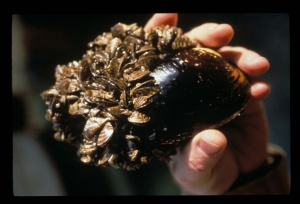
Welcome! Click on a tab below to find books, articles, and websites for use in this course.
You'll need a College of DuPage Library card in order to use most of the resources below from off campus. If your card is not working, it may need to be reactivated.
Questions? Feel free to use my contact info to the right, stop by the Reference Desk, or contact us by email or chat
Finding (and Narrowing) a Topic
Have a glimmer of a topic that you'd like to work on? Great! You'll want to work to narrow that topic a bit before you dive into the catalog and databases, or you will be swamped with results. You can try the following strategies to narrow a topic:
- Visit CQ Researcher, a library database that summarizes current events into massive PDFs.
- Gale Virtual Reference Library has got great entries on many of your topics.
- A Google news search can give you headlines from around the world on topics like "invasive species Illinois."
- The New York Times Science Section comes out on Tuesdays, and is full of fascinating ecology articles.
Still Drawing a Blank?
The College of DuPage library has several print magazines/journals that you can browse through for inspiration. For example, try looking at headlines in:
- American Forests
- Mother Earth News
- Audubon
Finding Articles in Databases
Scientific research can be best found in academic databases. Here are the top two databases to look for information.
Academic Search Complete has a mixture of popular and scholarly articles on a variety of subjects. You'll want to be sure that you're using a source appropriate for class when searching.
Academic OneFile is a great place to find a mixture of scientific and popular articles as well. Just like in Academic Search premier, make sure that you're using a good source for this project while searching.
You can also skim through a couple of major popular science magazines online in order to find your first article:
Not finding what you want here? See the full list of biology databases.
Patchwriting or Paraphrase?
Confused about when you would need to cite, or where the line is drawn between paraphrasing and patchwriting? Sometimes students believe that changing one or two words from a quotation means that quotation marks are not necessary. Good paraphrasing is transformative: the writer explains the main ideas of another author in his or her own words. Paraphrasing also requires a citation.
Take a moment to look at the following sources to see definitions and good and bad examples of student writing.
- The COD Plagiarism Tutorial has samples, quiz questions to test your knowledge, and helpful explanations.
- Take a look at the COD patchwriting definition at the bottom of the page.
- See a longer definition and example of patchwriting supplied by Lund University.
Using APA Style
Find directions about how to cite your sources in APA Style on the library citation guide.
You can also always check out the Purdue OWL website, which has APA citation guides and even a sample APA paper.
Finally, you are welcome to use NoodleBib if you'd like to use a program to create and organize your citations. You must "Create a New Folder" when you use NoodleBIB for the first time. Click on "I am citing a(n):," choose the type of item you are citing, and then fill in the online form. Your bibliography will be formatted for you.